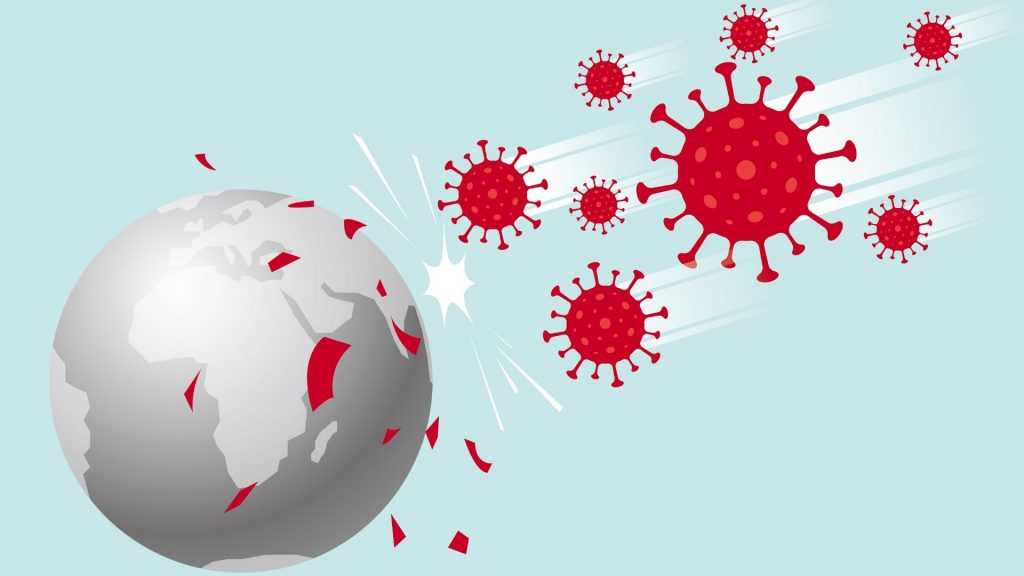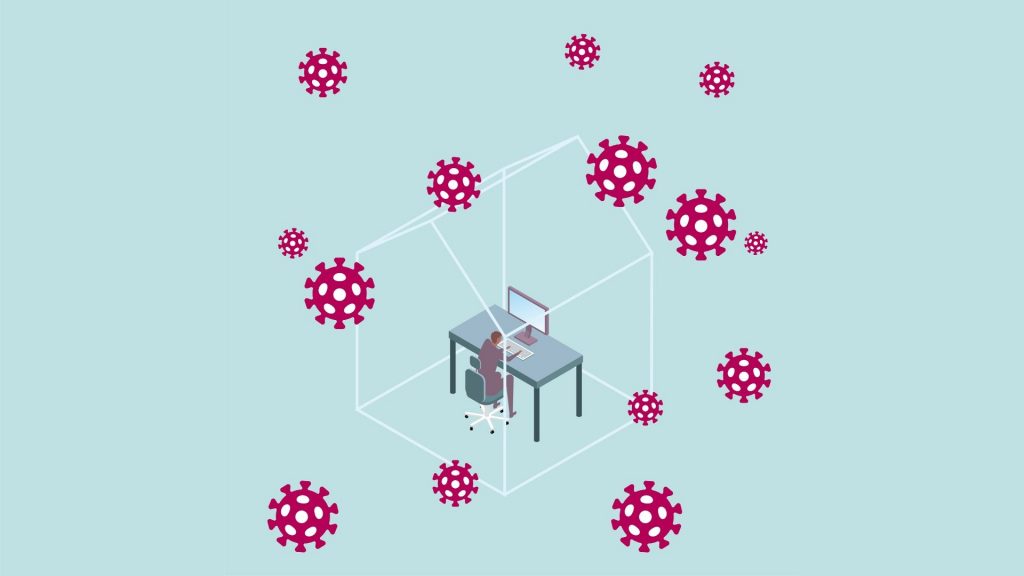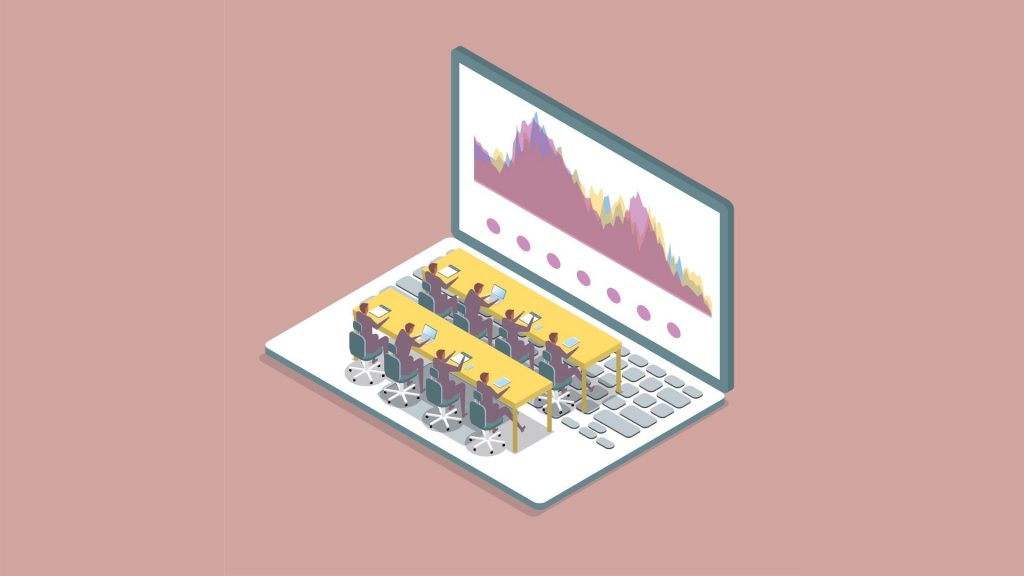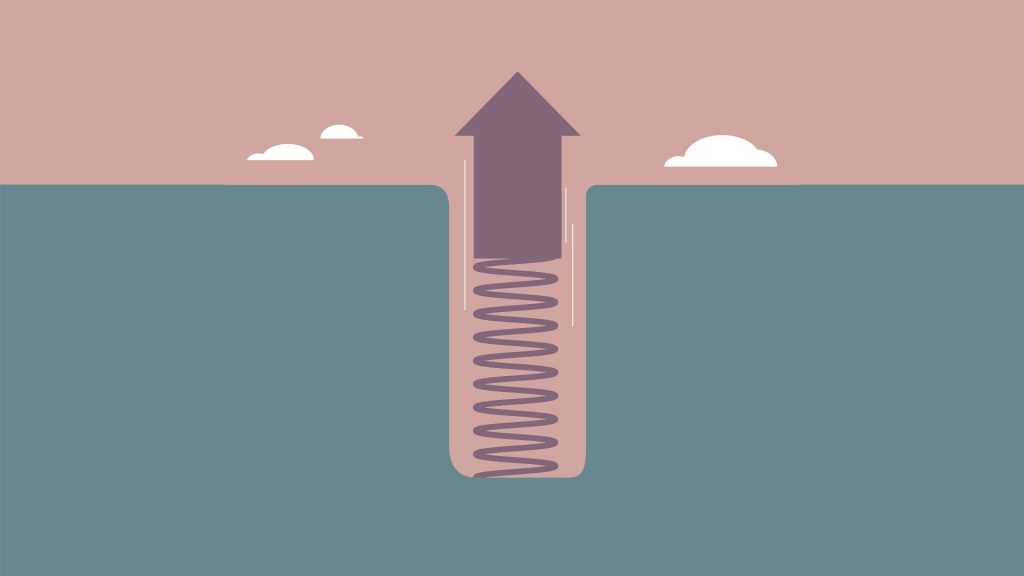How will the Polish economy look after the COVID-19 pandemic?
11 May 2020
In our latest post, Dr Wojtek Paczos, macroeconomist and lecturer at Cardiff Business School, and Dr Pawel Bukowski, researcher and lecturer at the Centre for Economic Performance at London School of Economics and Political Science, outline their four-stage rescue plan to save the Polish economy following the COVID-19 pandemic.
The impact of the current shutdown will be comparable with the largest economic crises in history. The further development of Poland in the long run depends more than ever on economic policy responses. It is necessary to act quickly, boldly, and generously because each subsequent day brings irreversible losses. We offer a four-stage rescue plan.
The economic crisis resulting from the epidemic can be best understood when divided into four stages: hibernation, rebooting, bounce back, and new normality. At every stage, threats to the economy are different and economic policy has a different task to fulfil. It is crucial for the plan’s success that it is implemented consistently and completely from the very beginning: success will be possible at every stage only if the previous stage is successful and the economic agents know what to expect in the next stage.
Stage 1: Hibernation (1-3 months)

We are currently in the first stage of a pandemic crisis. During this period, in order to save human health and life, the government closes some sectors of the economy and introduces restrictions on the movement of people. It causes a recession. The uniqueness of this recession lies in the fact that it is inevitable and purposeful because it is the only comprehensive mean of health protection available. The length of the hibernation stage will depend on the development of the pandemic and the situation in the healthcare system, but it should not be longer than three months.
Preliminary data and our estimates show that for every week of hibernation, household consumption drops by 30% on average. We estimate that nearly a quarter of this decline is postponed, the rest is lost forever. The longer the hibernation period, the higher the percentage will be lost. Consumption accounts for 75 percent of the GDP, so “mechanical” losses from monthly hibernation is not less than 1.4 percent of the annual GDP.
The longer the hibernation period, the greater the losses will be – in addition to the usual aggregation, there will be additional effects related to uncertainty and the need to save on the one hand, and on the other hand to the domino effect (losses in subsequent industries), as well as bankruptcies and unemployment. In the case of three months of hibernation, losses can reach up to 10 percent of the Polish GDP in 2020.
The logic of the classic strategy of stimulating demand is not applicable here, because people cannot physically go to work, restaurants, cinema or go on trips, so many important economic sectors (services, entertainment, tourism, part of the industry) are de facto frozen.
One thing needs to be emphasized: employees and business owners who have thrived and cooperated over the last years will find themselves on the brink of unemployment and bankruptcy for reasons completely beyond their control. Even after the end of the epidemic, the economy will not return to normal, because it is not easy to rebuild once business relationships, work experience or customer base are lost.
There are two responsibilities for the state at this stage. First of all – provide practically unlimited funds for health protection. Secondly – connect the economy to a fiscal and monetary intravenous therapy and hibernate economic activity and relations. This should allow the economy to jump back on its track after the pandemic disappears. The state is obliged to guarantee income to distressed citizens and enterprises, provided that employment is maintained – so that companies can still pay their employees and subcontractors for materials, rent or electricity. The current solution, in which the government takes on only 40 percent of the employee’s salary and only defers some social obligations is a fatal mistake. Enterprises with zero income due to hibernation will not be able to cover the rest and will have to fire people or face bankruptcy.
We estimate that the additional costs in healthcare are about 0.5 percent of the annual GDP, and the economic IV – depending on the adopted specific solutions and the length of hibernation – should be no less than 5 percent of the annual GDP for it to work. The total funds planned to save the economy in the “anti-crisis shield” adopted by the government is about 1.4 percent of the 2020 GDP, which is definitely not enough.
The situation we are dealing with is new, so at this stage economic policy will not be without mistakes. However, it is better to go wrong and spend too much than spend too little and lead to a wave of bankruptcies and unemployment. Connecting the economy to a fiscal and monetary IV fluid is therefore an investment that will allow the government to wake up the economy more easily after the largest wave of illness has passed. The emergence of a wave of bankruptcies and rising unemployment will be a signal that the hibernation phase has failed and economic losses will be long-term and greater than our calculations assume.
We estimate that in 2020 the upper limit of the state’s loan possibilities is 8-10 percent of the GDP. Making the most of it would keep the hibernated economy on IV for about three months. Unfortunately, if the pandemic lasts longer, the economy cannot be hibernated. Then the state will have to disconnect the economic IV, and the rest of the available funds will be redirected directly to citizens in order to save their health and life. We all hope that this stage will not happen, but it is the government’s responsibility to have a plan for this contingency.
Stage 2: Rebooting (3-6 months)

In the case of successful hibernation, we go to the second stage of the crisis – rebooting. We expect it to last for the second half of this year. The fiscal possibilities of the state will already be limited, so a change of strategy will be needed. Instead of keeping the economy hibernating, it should be brought back to life gradually.
The key at this stage will be mass testing of the entire population in order to isolate sick individuals and their households so that healthy ones can return to work safely and start a fairly normal life. If hibernation was successful, then companies should resume business as quickly as possible and healthy employees should return to their former jobs. At the rebooting stage, only a healthy and resistant part of the population will return to normal functioning, the rest will hibernate further. This means that the resumption of business will take place in turns.
The challenge for economic policy is now completely new and no economy has dealt with it before – how to ensure justice at this stage? Those companies that will be lucky enough to have healthy employees will come into play sooner and take over the profits of unlucky companies. Those who were tested for a virus will start earning faster than those who will be waiting in line for tests.
In addition, you will still need to artificially keep alive the part of the economy that will not be able to easily wake up from hibernation. For example, tourism will have to stay under life support for a long time. The solution can be solidarity redistribution from those who managed to go through the first stage with dry footed to those who will continue to suffer.
We propose that these sudden and potentially high inequalities be leveled out by temporary redistribution. These new inequality of profits and earnings at the rebooting stage will not result from either productivity or resourcefulness, but from an unlucky place in the queue for testing. However, we don’t have a ready-made, bespoke redistributive tool. We encourage the government and economists to take up this challenge in public debate and economic policy.
Stage 3: Bounceback (1-2 years)

The successful rebooting of the whole economy heralds the transition to the third and probably the longest stage – rebound and catching up. At this stage, supply will no longer require state support and the market will take care of it. The state’s economic policy must then switch to supporting weakened demand. The quarantine period will reduce our savings and many will go into debt. During the bounceback, we will reduce consumption, rebuild savings and pay off debts. In addition, hibernation experience will make us more cautious – uncertainty will cause many of us to give up part of the expenses “just in case”. If hibernation did not end with full success, unemployment, loss of earnings and unavailability of credit will be powerful obstacles to bolstering demand. Consumers will never make up most of their quarantine consumption losses – we won’t eat three lunches a day.
At this stage, textbook demand tools taken from economic theory and tested in previous (demand-driven) recessions will be used: cash transfers for citizens increasing their disposable income as well as low interest rates and quantitative easing improving credit availability and reducing uncertainty.
The issue of taxes is very delicate these days. On the one hand, raising income and consumption taxes in times of recession can be counterproductive, as it reduces demand and investment propensity. On the other hand, the state must start paying back the debt that has accumulated in the deepest moments of the crisis.
The solution may be to introduce a progressive property tax imposed on the richest Poles (e.g. an upper 1 percent). This solution has two advantages – first, the assets of millionaires are mostly in the form of easily negotiable financial assets. Secondly, such a tax is levied on past streams of income (accumulated in the form of wealth), and it does not affect current and future income. Thus, it does not discourage work, consumption or investment. There is a precedent for such a fiscal initiative. In 1923, the young Polish state introduced a progressive wealth tax to help the damaged Polish economy after years of warfare.
Successful demand support will lead to increased economic activity (lower unemployment, higher production and consumption), but its side effect will be price increases, i.e. rising inflation. If inflation does not appear at this stage, it means that demand is still ineffective and the rebound has failed – economic policy could have done more. The challenge of this stage will be to conduct such a monetary policy in order to obtain the largest increase in economic activity with a limited but inevitable increase in inflation. It will be very difficult but not impossible.
At the rebound stage, two major threats loom over economic policy. The first is that public debt financing will push investment out of the market. If banks finance the government’s borrowing needs by cutting off credit for the economy, then instead of rebound we will see a deepening recession. To avoid this threat, it will be crucial to rebuild quantitative easing through appropriate means, as well as high level of transparency, clear communication of goals and means, and cooperation of fiscal and monetary policy. The second threat is the emergence of high inflation without the corresponding increase in economic activity. Here again, the Polish Central Bank has a central role to play – by credibly pledging to the path of future interest rates (forward guidance) it can limit the build-up of inflation expectations.
Stage 4: New normality

If the stages of hibernation, start-up and rebound are successful, then in a year or two we will get out of the crisis, unemployment will fall, economic growth will reappear and life will return to normal. We will reach the last and probably the most difficult stage of the crisis – drawing conclusions and reforming the economic system. The current situation makes us aware of many of the imperfections of the current one – especially in terms of poor health protection, unfair taxes, too flexible labour market, and the erosion of the rule of law and independent institutions. Rather than simple growth, the goal of new reforms should be to make the economy more resilient to risk.
The first lesson we should learn at last is that spending on healthcare should be treated as an investment not only in life and health, but also in the economy. Hibernation of the economy and enormous costs associated with it would not be necessary if Poland (and not only Poland) had a significantly larger number of places in infectious disease hospitals and the possibility of rapid and mass testing in infected areas. The crisis has made us aware that nurses and doctors are much more key occupations for the economy than, for example, a currency trader, but they are paid many times less. It must be said simply: too little investment in the health service causes senseless economic loss, which reduces the welfare of society as a whole.
As the US example shows, the solution is not privatisation, because the purpose of private enterprises is profit, not the elimination of systemic risks – private hospitals will not have the incentive to keep a supply of hospital places for a rainy day.
Secondly, in the new normality, we need a radical increase in tax progression. The financing of the impending debt during the bounceback phase will be partly done by inflation, which is a de facto regressive tax. This is because it hits mainly people whose pay is quite stiff (e.g. budget employees) and whose assets are mainly in the form of savings on the account. Because such people are usually from the lower or middle social strata, inflation will affect relatively more poor than rich. The latter have much greater possibilities of renegotiating their wages, and their assets are mainly in the form of real estate and complex financial assets (which are better protected against inflation than bank deposits).
This means that the current crisis will increase already very large economic inequalities in Poland. To restore social justice, we must relieve poor and middle-income Poles in the future by taxing the income and wealth of the richest.
In addition to the proposed progressive tax on property for Polish millionaires, it is also necessary to thoroughly reconstruct the income tax. Currently (as the research of the Ministry of Finance shows) Poland has a tax regression, i.e. the poor pay relatively more than the rich.
Thirdly, we should regulate non-traditional forms of employment and radically improve the functioning of the National Labor Inspectorate. We know from research that a flexible labour market is characterized by greater cyclical fluctuations – more employment during the boom, but also higher unemployment during the recession than the regulated market. Studies also show that the effects of unemployment are permanent – most of those laid off never make up for lost wages. We also know from studies that the dual labour market does not improve GDP indicators at all. Quite the opposite. Empirical studies show that, for example, in Spain the rate of productivity growth has slowed due to the introduction of flexible forms of employment.
Moving away from pushing employees into flexible, risky forms of employment is a historic necessity – both in order for the Polish economy to develop at a more equal pace and in order to eliminate the automatic systemic risk embedded in it.
A new normality cannot be built without learning the fourth lesson – rebuilding the rule of law and strong institutions. This epidemic and crisis is the biggest test for Poland since the fall of communism. We can pass it: draw wise conclusions from it and fix what works poorly or does not work at all. It will not be easy. Reaching a new normality will require several stages. It may take years and will not be without sacrifices.
But there is also a second scenario. We know from economic theory that strong institutions are needed to build prosperity and protect citizens’ freedom. We also know that such a crisis is always a great temptation for the authorities. Weak institutions and the temptation of power are a deadly mix. If it explodes, growth will end, we will not build any prosperity, and we will feel the effects of the crisis for years or decades to come.
Dr Wojtek Paczos is a macroeconomist and lecturer at Cardiff Business School and at the Institute of Economic Sciences of the Polish Academy of Sciences.
Dr Paweł Bukowski is a researcher and lecturer at the Centre for Economic Performance, London School of Economics and Political Science and at the Institute of Economic Sciences of the Polish Academy of Sciences.
This article was originally published on Wyborcza.pl.
- March 2024
- April 2023
- August 2022
- July 2022
- April 2022
- March 2022
- February 2022
- December 2021
- October 2021
- September 2021
- May 2021
- April 2021
- March 2021
- February 2021
- January 2021
- December 2020
- November 2020
- October 2020
- September 2020
- August 2020
- July 2020
- June 2020
- May 2020
- April 2020
- March 2020
- February 2020
- January 2020
- November 2019
- October 2019
- September 2019
- August 2019
- July 2019
- June 2019
- May 2019
- April 2019
- March 2019
- February 2019
- January 2019
- December 2018
- November 2018
- October 2018
- September 2018